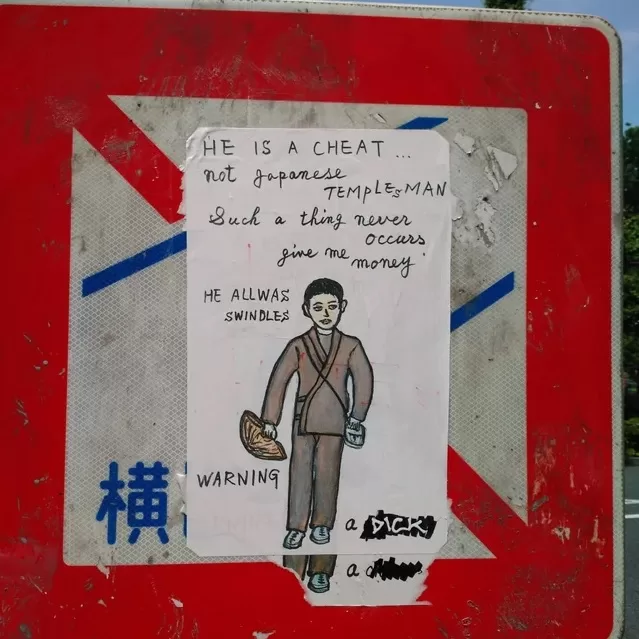Beware of Common Fake Monk Scams Around Japanese Temples
Traveling in Japan is an amazing experience – with so many beautiful temples and shrines to visit. However, you need to be wary of fake Buddhist monks who scam tourists, especially around famous sites. These clever scammers use various pushy tactics to pressure you into handing over money.
One common scam involves a scammer approaching you as you exit a temple and handing you a “lucky charm” or religious trinket, then demanding a “donation”.

Stories of Fake Monk Scams in Japan
1. A tourist described how after visiting Meiji Shrine, a man in monk robes gave him a gold card with Buddhist symbols. Before he could object, the scammer demanded 1000 yen for the unwanted charm. He felt pressured by the fake monk’s pushy demands.
2. These scams remains ongoing in 2025, fraudulent monks operating near Ueno Toshogu Shrine, Tokyo, have been tricking unsuspecting tourists. These fake monks pose as genuine affiliated members of the shrine, offering stickers and prayer beads for an exorbitant price of 10,000 yen to foreign visitors. They exploit the ignorance of tourists, promising them an “exclusive experience” at Ueno Toshogu. The victims typically realize the fraud when they later visit the official shrine office. The shrine authorities strongly advise against purchasing such items from individuals claiming to be monks outside the official premises.
3. The monk scam in Akihabara involves a tall man, dressing up as a monk and approaching pedestrians on the street. This person hands out gold charms to unsuspecting individuals, claiming them to be lucky. After gaining their interest, they ask the individual to sign their book where other names, wishes, nationalities, and donations are listed. Additionally, they place beaded bracelets on the individuals’ wrists. Once the person is involved to this extent, the fake monk demands a donation which they insist should be at least 10,000 yen to 20,000 yen. They refuse to accept lesser amounts, and if denied, they become angry and storm off.
4. This scam is common in tourist areas all over Asia, as well as Western countries, and generally work the same way. This video, from London, actually shows a fake monk in the act and admitting he was not a real monk.
They Use Deceit and Intimidation
In addition to pushy tactics, fake monks also rely heavily on deceit and intimidation. For example, they may show you a book filled with extremely large “donation” amounts given by previous tourists, in order to pressure you into matching those inflated amounts.
When their lies and tricks don’t work, the scammers often turn to aggressive intimidation. One man recalled how when he only gave 100 yen to a fake monk in Asakusa, the monk yelled at him and followed him down the street, trying to scare him into paying more. Others described fake monks blocking their path and refusing to let them go until they handed over cash.
How to Avoid These Scam Monks During Your Trip
To avoid having these clever scammers ruin your trip to Japan, keep the following advice in mind:
- Real Buddhist monks will never approach you, ask for money, or act aggressively. They just stand silently with a donation box. Walk away if a “monk” approaches you.
- Never accept anything a stranger hands you like charms or bracelets. Scammers will force you to pay.
- Don’t be intimidated if a scammer gets pushy or angry. Firmly say no, return items, and leave.
- Only donate at legitimate temples and charities. Be very wary of “monks” asking for money on the street.
- Trust your gut. If something feels like a scam, it probably is. Just say no and go.
Hundreds of temples and shrines await you in Japan. By knowing these common fake monk traps, you can enjoy your spiritual journeys there without being hassled. Just use common sense, avoid engaging with pushy strangers, and don’t be afraid to firmly decline. With alertness and caution, these scammers won’t ruin your amazing trip.